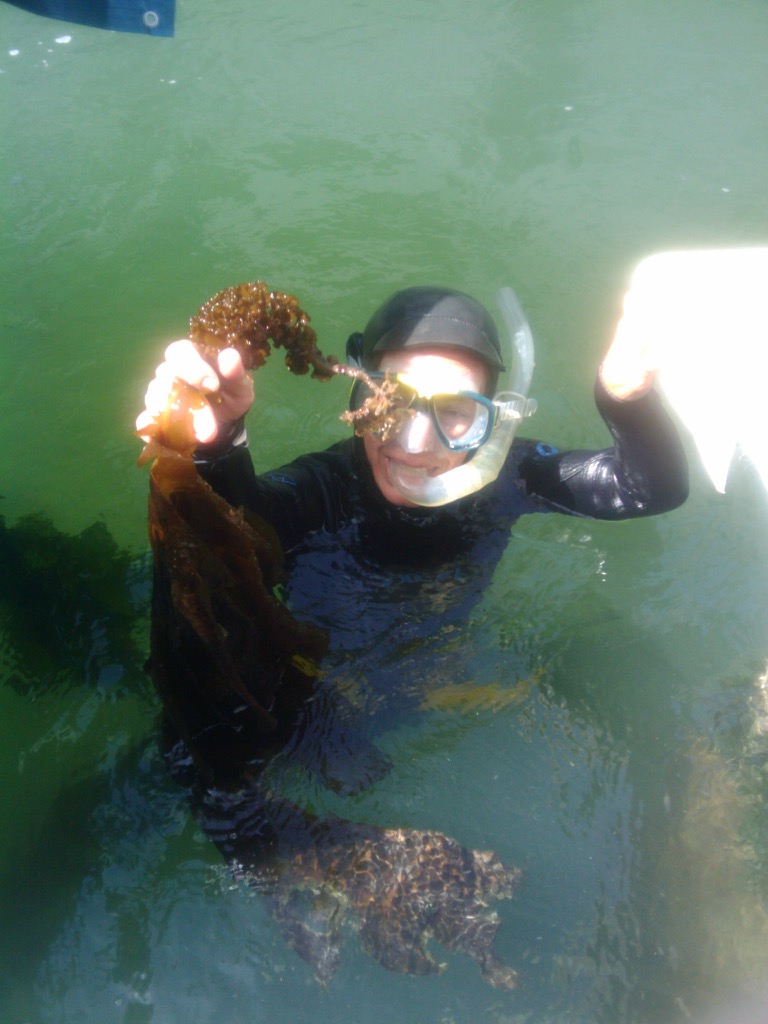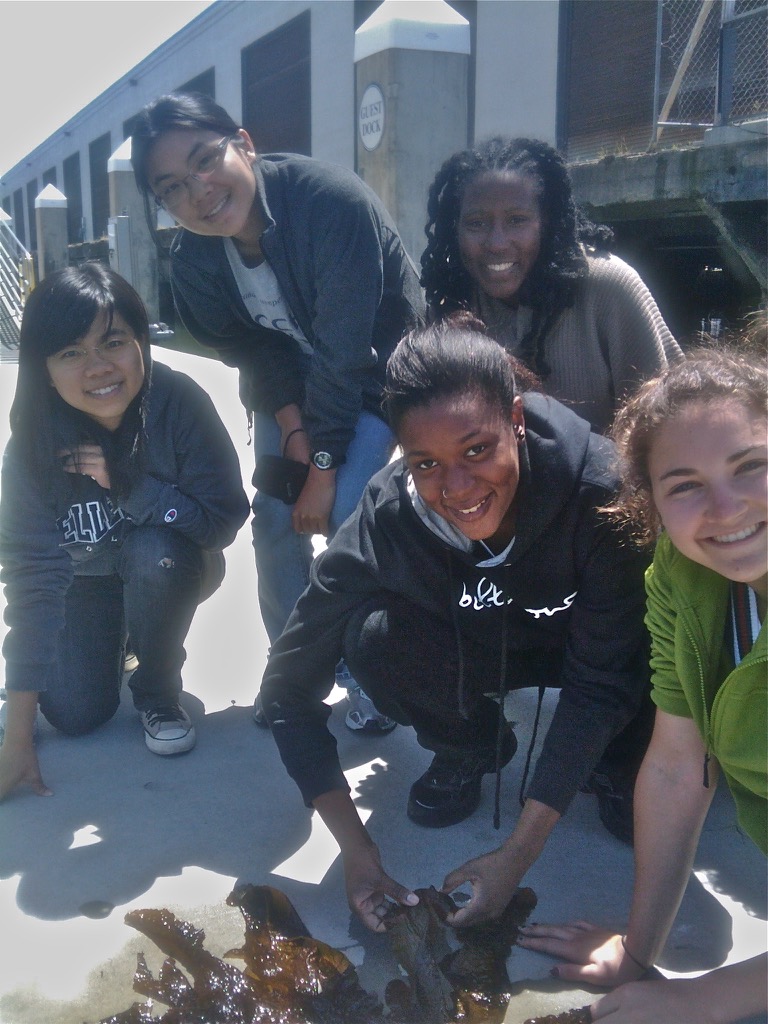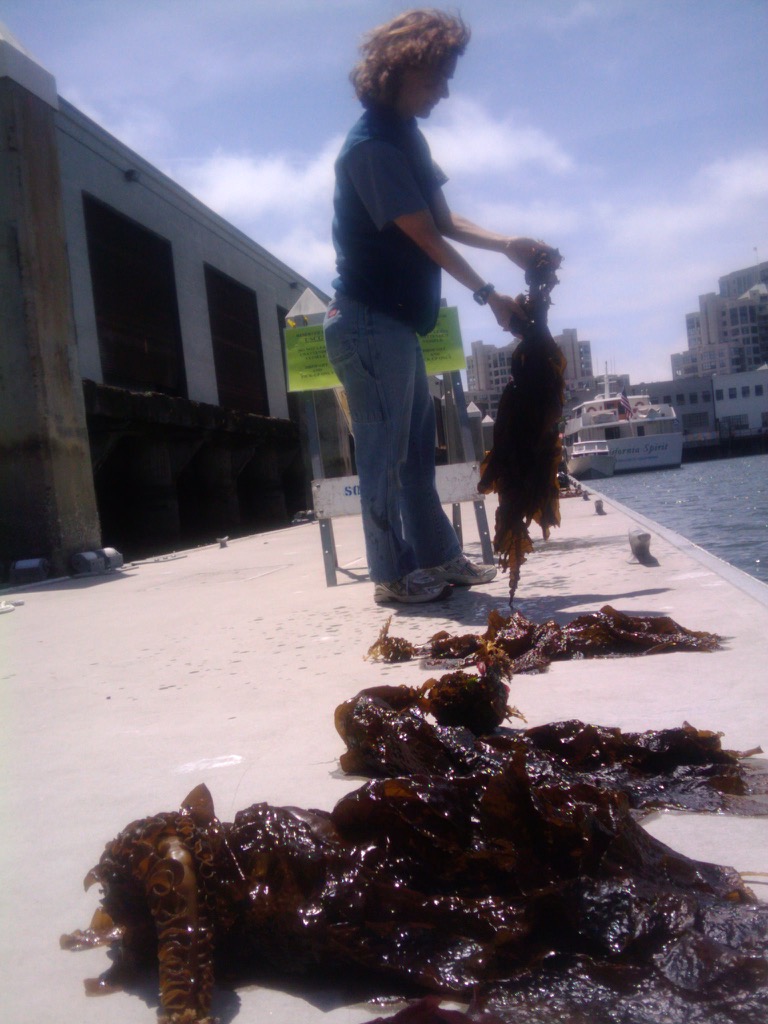Kelp Watch

The kelp Undaria pinnatifida is a newcomer to the West Coast. Over the last 15 years it has invaded Southern and Central California, including San Francisco Bay, and it could spread as far as Southeast Alaska. This aquatic plant grows very quickly and is spread by boats, anchors, floats, and aquaculture gear. It competes with native seaweeds for space, light, and resources.
Undaria is invasive, which means it has been transported from its native home and is harming the new environment. Not all foreign species are invasive, some get along very well in new places with new neighbors. However, Undaria is a hazard to the places it invades, and we need your help reporting new sightings! By spotting Undaria early, we can prevent the spread of this harmful plant. Surfers, scuba divers, kayakers, tide poolers and fishermen and others enjoying the coast can all assist by keeping an eye out for Undaria on rocky shores, kelp forests, harbors, and marinas. You can also help by inspecting your boat and slip and removing Undaria if you find it.
If you find Undaria…
- Remove the kelp by grasping it near the bottom (closest to where it is attached.)
- Remove it from the water immediately. Do not let water run off the kelp back into the ocean.
- Take a photograph.
- Note the location and details (i.e. slip number if in marina.)
- Do not throw what you think may be Undaria back into the water.
- If possible, keep the plant in a plastic bag, and keep it cool.
- If possible, press the plant within 2-3 days.
Report suspected Undaria here or email us your sighting information at zabinc@si.edu.
History

Undaria was first spotted at the Los Angeles-Long Beach Harbor in 2000. It became established in Monterey Harbor in 2001, and for 8 years, that was its northernmost extent. However, in 2009, we found small populations at Pillar Point Harbor in Half Moon Bay and at 2 sites in San Francisco Bay. It has since spread to multiple locations within San Francisco Bay. Based on its environmental tolerances, we know that Undaria live from Southeast Alaska to Baja California.
Want to get involved?
This is a monitoring activity, so this project is mostly driven by volunteers. If you are interested, click here to learn more.
The "What" and the "Why"
What are we trying to learn?
We want to know where Undaria is spreading, and how quickly it is getting there. It is considered one of the world’s 100 worst invaders, and outcompetes native species that other marine species depend on. Click here to see the full list. We also want to study the effects of Undaria on various environments. The impacts it has are not the same in every location, so it is difficult to predict how it will act in a new place.
Why do we care about Undaria? Who cares if it takes over?

We cannot predict what Undaria will do in any new location, but it has had a lot of negative effects on places it has invaded around the world. It is a threat to the ecosystems it invades and can attach to nearly any material left in saltwater. The kelp has had a significant effect on aquaculture. In Oosterschelde, Netherlands, Undaria covers vast areas and grows on cultivated oysters and mussels, so it is impossible to harvest by the usual methods (dredging with nets). Growers must spend extra money removing lots of the kelp before they can harvest.
Accidental spread of Undaria is common, which makes the spread difficult to predict. But with early detection, eradication is possible. There are several documented cases of eradication of marine species. Getting rid of a species is easier and less costly if it is done early, before the population becomes too widespread.
Methods
This is a public reporting and information network that tracks the distribution, abundance, and status of this species for the Pacific Coast of the United States.
For this project, volunteers can pick the sites they want to monitor. The majority of the data collected comes from individual Undaria monitoring efforts.
If you have found what you think is Undaria, follow the steps below
- Remove the kelp by grasping it near the bottom (closest to where it is attached)
- Remove it from the water immediately. Do not let water run off the kelp back into the ocean
- Take a photograph
- Note the location and details (i.e. slip number if in marina)
- Do not throw what you think may be Undaria back into the water
- If possible, keep the plant in a plastic bag, and keep it cool
- If possible, press the plant within 2-3 days
Some sites that we have sampled previously include
- Pillar Point Harbor, Half Moon Bay, CA
- San Francisco Marina, San Francisco, CA
- South Beach Harbor, San Francisco, CA
Get Involved
* We are not currently accepting new volunteers *
To get more information:
Contact Rachael Mady, SERC Participatory Science Coordinator, at MadyR@si.edu or 443-482-2276.